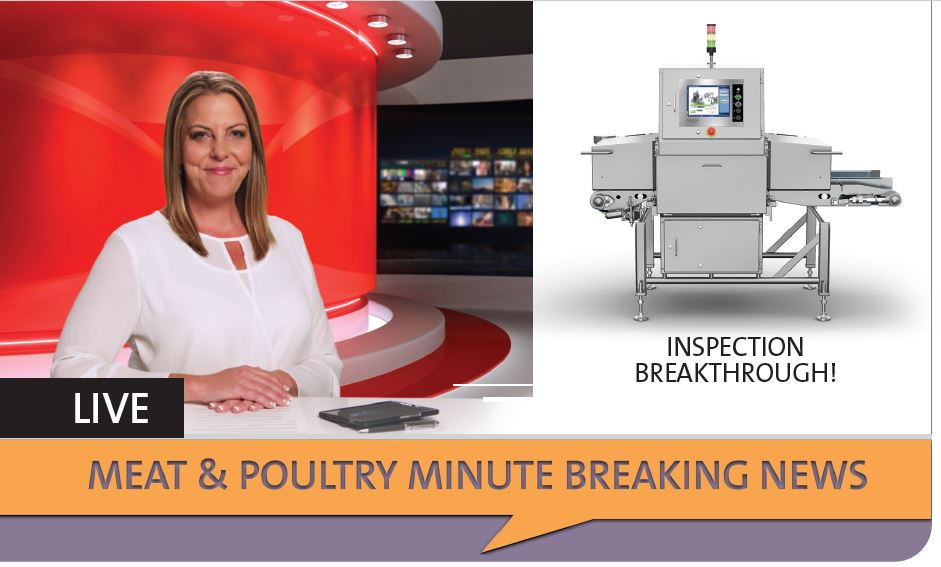When deciding whether to invest in x-ray and fat analysis systems for the food industry, calculating the total cost of ownership (TCO) is beneficial. In addition to the initial purchase price, TCO involves all the direct and indirect costs associated with the machine over its lifecycle.
This article lists 8 factors that should be considered when evaluating the Total Cost of Ownership for both x-ray and FA machinery for meat or poultry processing, as well as prepared or packaged foods. These factors will help processors and CPGs companies gauge the viability of an investment, as well as compare solutions.

1. Running Costs
The annual running cost of an x-ray and fat analysis system for the food industry must be taken into account and is based on power and time. Additionally, if a machine requires water or compressed air, the cost of supplying these should be included too. Be aware that running costs and uptime involve maintenance and sanitation. An installation with frequent washdown, caustic cleaning solutions and arduous cleaning techniques can result in more downtime and increase the need for maintenance.
2. Service Costs and Spare Parts
Service costs vary depending on the machine and its usage. Regular preventive maintenance helps to maximize a machine’s lifespan by identifying parts due for replacement. Such visits also provide an opportunity for new software updates to be installed, electrical and mechanical guards and safety systems to be reviewed, and refresher training for operators and maintenance personnel to be conducted.
3. Engineering
To prevent microbiological contamination, it’s important to check how a piece of equipment has been engineered. Factors to consider include: Are surfaces prone to bacteria collection and growth? Are areas flat or sloped to allow easy drainage during cleaning? How secure are components needed to survive long term in the processing or production environment? Systems engineered to ease maintenance and sanitation can lead to a lower Total Cost of Ownership by promoting a faster turnaround in washdown and other cleaning routines.
4. Life Expectancy
Machines built with robust components are designed for longevity. X-ray and FA machines for the food industry constructed with a specific processing or manufacturing environment in mind meet sector guidelines, including those for hygienic or sanitary design. This means components can withstand challenges in those environments and achieve more effective and often faster operation and sanitation, minimizing downtime and boosting efficiency. When considering TCO, it’s important to consider the cost of replacing a generator, as well as other wear parts.
5. Performance and Technology
The technology is where the value of an investment can really pay off so it’s important to determine how accurate and reliable it is. As well as providing outstanding detection sensitivity for physical contaminants, x-ray systems for the food industry are available which offer additional product integrity checks, enabling processors to discover anomalies within a product or package, such as missing components or weight issues.
6. Ease of Use
Ease of use impacts on the life and cost of an x-ray or FA system for the food industry, especially in harsh environments where sanitation is crucial. By making systems easier for operators to use, labor hours can be reduced, thus contributing to Total Cost of Ownership goals. User-friendly features include touchscreen-operated systems and auto-learn routines. Additionally, simple machine disassembly and reassembly, reduces maintenance time, while a machine designed for unobstructed sightlines allows operators to clearly supervise, clean and maintain devices.
7. Downtime Risks
A change of parts or altering a machine’s software set-up when switching products can play into critical production minutes. Some x-ray machines allow operators to troubleshoot themselves, while others come with operational sensitivities that require constant maintenance intervention, service or technical support.
8. Future Proofing
When assessing an x-ray or FA system for the food industry, future proofing is vital. It’s important to ascertain whether today’s line speeds will increase over the coming years due to advances in processing equipment. If the answer’s likely to be yes, thought should be given to the current speed accuracies of the system, and whether the software has the flexibility to cope with higher production volumes in the future.

.svg)

